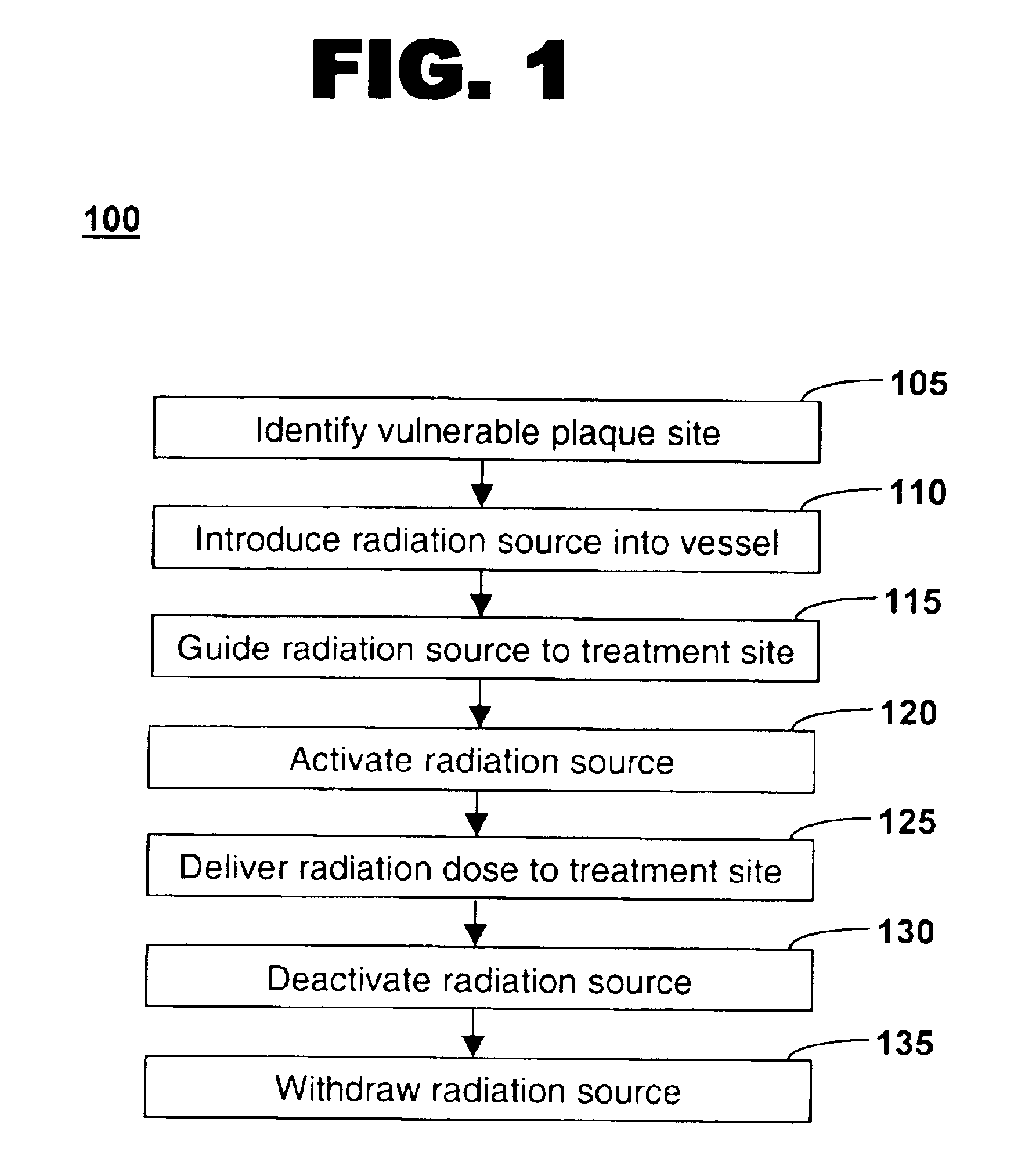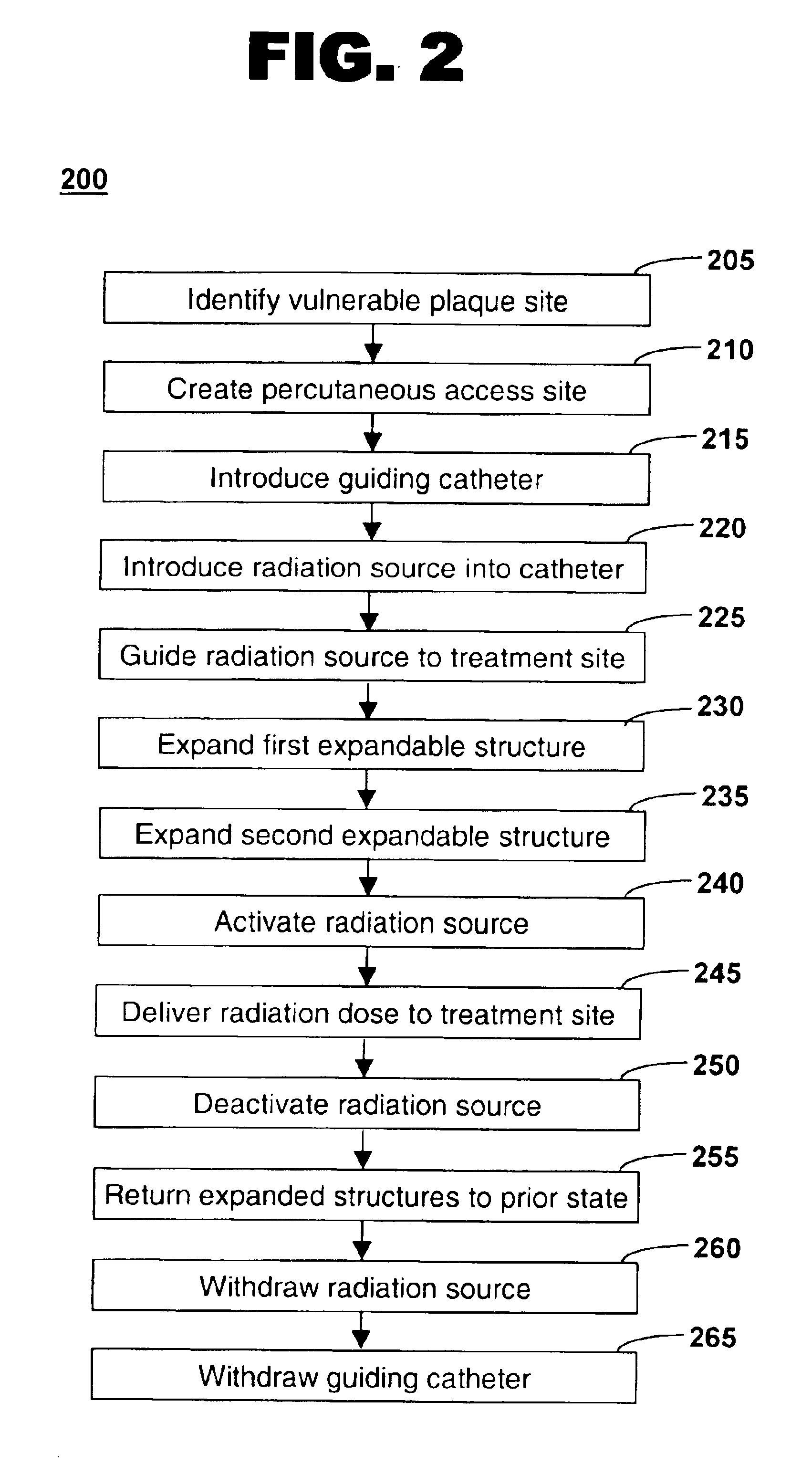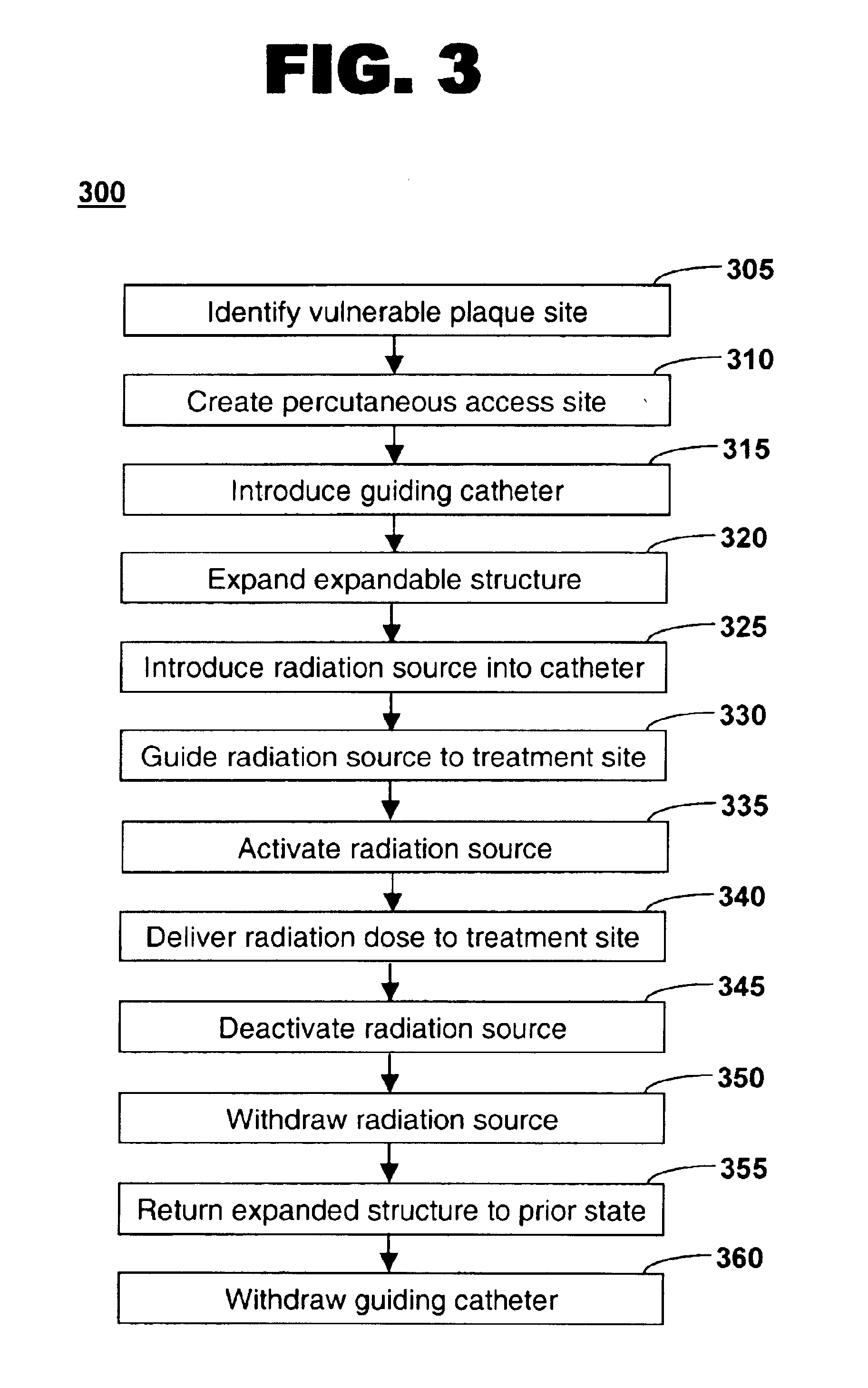Method of treating vulnerable plaque using a catheter-based radiation system
a radiation system and vulnerable plaque technology, applied in radiation therapy, x-ray/gamma-ray/particle irradiation therapy, therapy, etc., can solve the problems of thrombotic stroke, major cause of death, heart attack, stroke,
- Summary
- Abstract
- Description
- Claims
- Application Information
AI Technical Summary
Benefits of technology
Problems solved by technology
Method used
Image
Examples
Embodiment Construction
[0021]One aspect of the present invention is a method of treating vulnerable plaque at a site in a vessel. FIG. 1 shows a flow diagram of one embodiment of the method at 100, in accordance with the present invention.
[0022]A vulnerable plaque site may be identified for treatment (Block 105). Identification is an important element in treating vulnerable plaques because it permits treatment to be delivered to a precise location. Identification may be accomplished using methods such as thermography or spectrography.
[0023]A catheter-based radiation source may be introduced into the vessel containing the vulnerable plaque site identified for treatment (Block 110). The radiation source may be, for example, a radioactive wire, a radioactive strip, a radioactive pellet, a radioactive stent, a receptacle or lumen that contains radioactive material, a receptacle or lumen that receives radioactive material, a receptacle or lumen that is coated with radioactive material, a device for delivering ...
PUM
 Login to View More
Login to View More Abstract
Description
Claims
Application Information
 Login to View More
Login to View More - R&D
- Intellectual Property
- Life Sciences
- Materials
- Tech Scout
- Unparalleled Data Quality
- Higher Quality Content
- 60% Fewer Hallucinations
Browse by: Latest US Patents, China's latest patents, Technical Efficacy Thesaurus, Application Domain, Technology Topic, Popular Technical Reports.
© 2025 PatSnap. All rights reserved.Legal|Privacy policy|Modern Slavery Act Transparency Statement|Sitemap|About US| Contact US: help@patsnap.com



